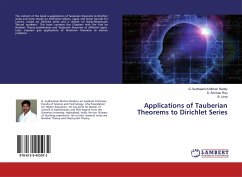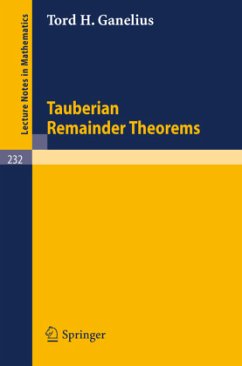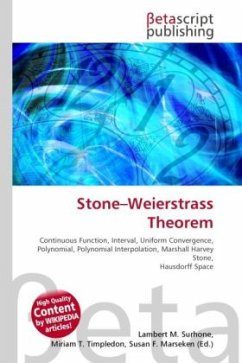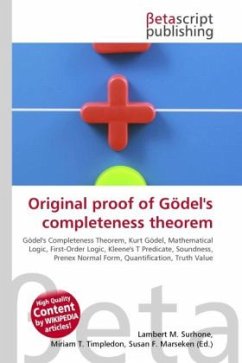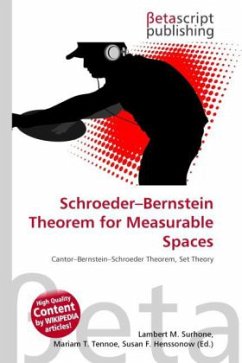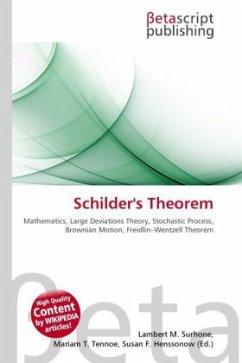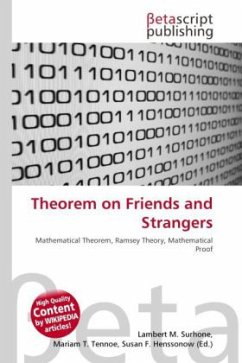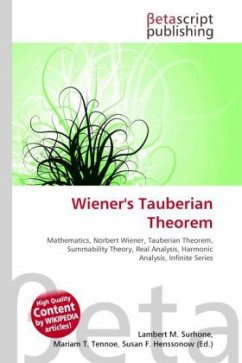
Wiener's Tauberian Theorem
Versandkostenfrei!
Versandfertig in 6-10 Tagen
30,99 €
inkl. MwSt.

PAYBACK Punkte
15 °P sammeln!
High Quality Content by WIKIPEDIA articles! In mathematics, Wiener's tauberian theorem is a 1932 result of Norbert Wiener. It put the capstone on the field of tauberian theorems in summability theory, on the face of it a chapter of real analysis, by showing that most of the known results could be encapsulated in a principle from harmonic analysis. As now formulated, the theorem of Wiener has no obvious connection to tauberian theorems, which deal with infinite series; the translation from results formulated for integrals, or using the language of functional analysis and Banach algebras, is how...
High Quality Content by WIKIPEDIA articles! In mathematics, Wiener's tauberian theorem is a 1932 result of Norbert Wiener. It put the capstone on the field of tauberian theorems in summability theory, on the face of it a chapter of real analysis, by showing that most of the known results could be encapsulated in a principle from harmonic analysis. As now formulated, the theorem of Wiener has no obvious connection to tauberian theorems, which deal with infinite series; the translation from results formulated for integrals, or using the language of functional analysis and Banach algebras, is however a relatively routine process once the idea is grasped.



